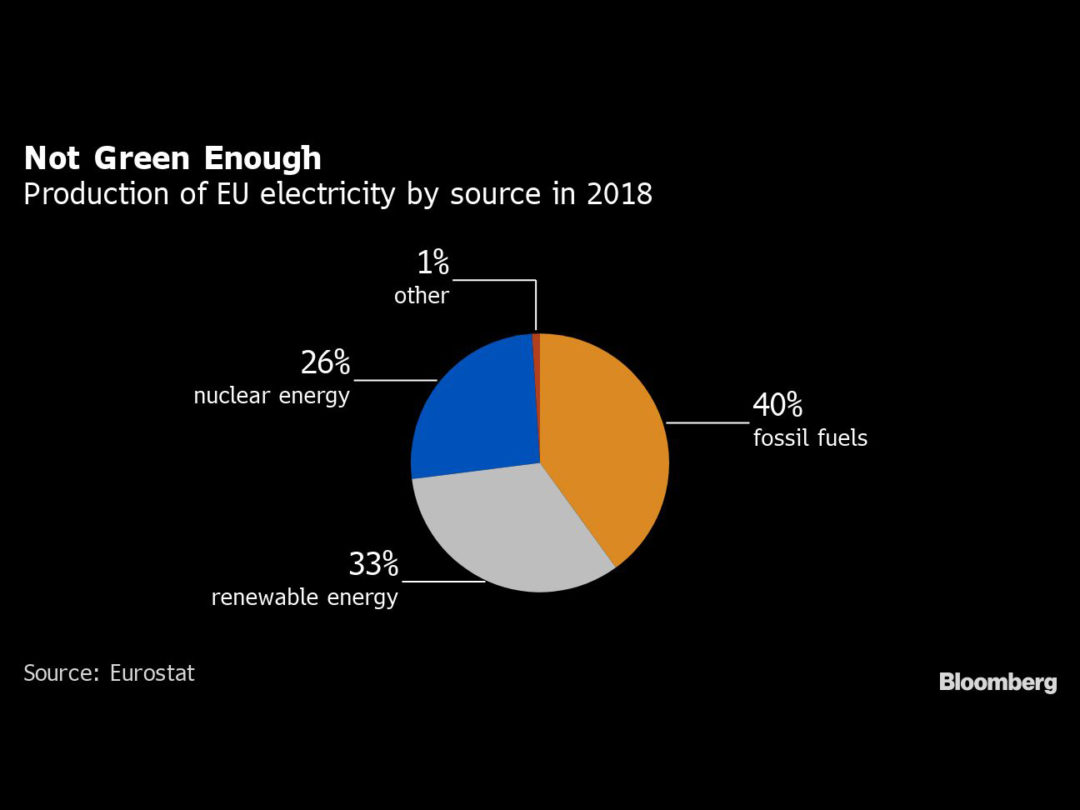
Visit Our Sponsors |
|
|
|
|
|
|
|
|
|
|
|
|
|
|
|
|
|
|
|
|
|
|
|
|
|
|
|
|
|
|
|
|
|
|
|
|
|
|
|
|
|
|
|
|
|
|
|
|
|
|
|
|
|
|
|
|
|
|
|

The European Union wants a massive increase in offshore wind to help clean up the electricity industry and aid the recovery after the pandemic.
To meet its mid-century goal of becoming the world’s first climate-neutral continent, the region needs to boost offshore wind capacity to 300 gigawatts by 2050 from just 12 gigawatts now, according to an EU roadmap published on Thursday. That will require as much as 789 billion euros ($940 billion) in investment, mostly from utilities and energy majors.
The strategy proposed by the European Commission details how to unlock the potential for wind farms at sea that’s getting cheaper every year and are more powerful than those on land. But the industry is still struggling with bureaucratic hurdles, while fierce competition for deals makes each project less profitable.
“With our vast sea basins and industrial leadership, the European Union has all that it needs to rise up to the challenge,” said Frans Timmermans, the commission’s executive vice-president. “Already, offshore renewable energy is a true European success story. We aim to turn it into an even greater opportunity for clean energy, high quality jobs, sustainable growth, and international competitiveness.”
Europe wants to lead the global fight against climate change and attract investors in clean technologies under the Green Deal. The International Energy Agency estimates the industry is growing 2.2% a year and will draw in $840 billion over the next two decades — but that pace must double to reach climate targets, according to the agency.
As an interim objective, the EC targets 60 gigawatts of offshore wind and at least 1 gigawatt of tidal and wave energy by 2030. The goal for offshore is realistic, according to Imogen Brown, analyst at BloombergNEF, which forecasts the EU capacity at 57.2 gigawatts by then.
The acceleration that the EU is targeting post-2030 is a bigger challenge and the key for meeting the 2050 offshore wind goal of 300 gigawatts will be collaboration between nations on planning, grid development and innovation, Brown said. The commission is also eyeing 40 gigawatts of tidal and wave energy by the middle of the century.
“We need to boost the EU’s domestic production to achieve our climate targets, feed the growing electricity demand and support the economy in its post-Covid recovery,” said EU Energy Commissioner Kadri Simson.
The commission wants to use Europe’s 750 billion-euro economic rescue fund to help spur investment in the sector. About two thirds of the sum needed to finance the expansion has to be spent on grid infrastructure and a third for generation. The annual investments in grid infrastructure, estimated at around 30 billion euros in the past 10 years, would have to rise to more than 60 billion euros in the coming decade and increase further after 2030.
“Private capital is expected to provide the bulk of those investments, but an efficient and well-targeted use of EU public funds will play a strategic catalytic role,” the commission said.
Here’s the road map for the EU and national governments:
RELATED CONTENT
RELATED VIDEOS
Timely, incisive articles delivered directly to your inbox.







